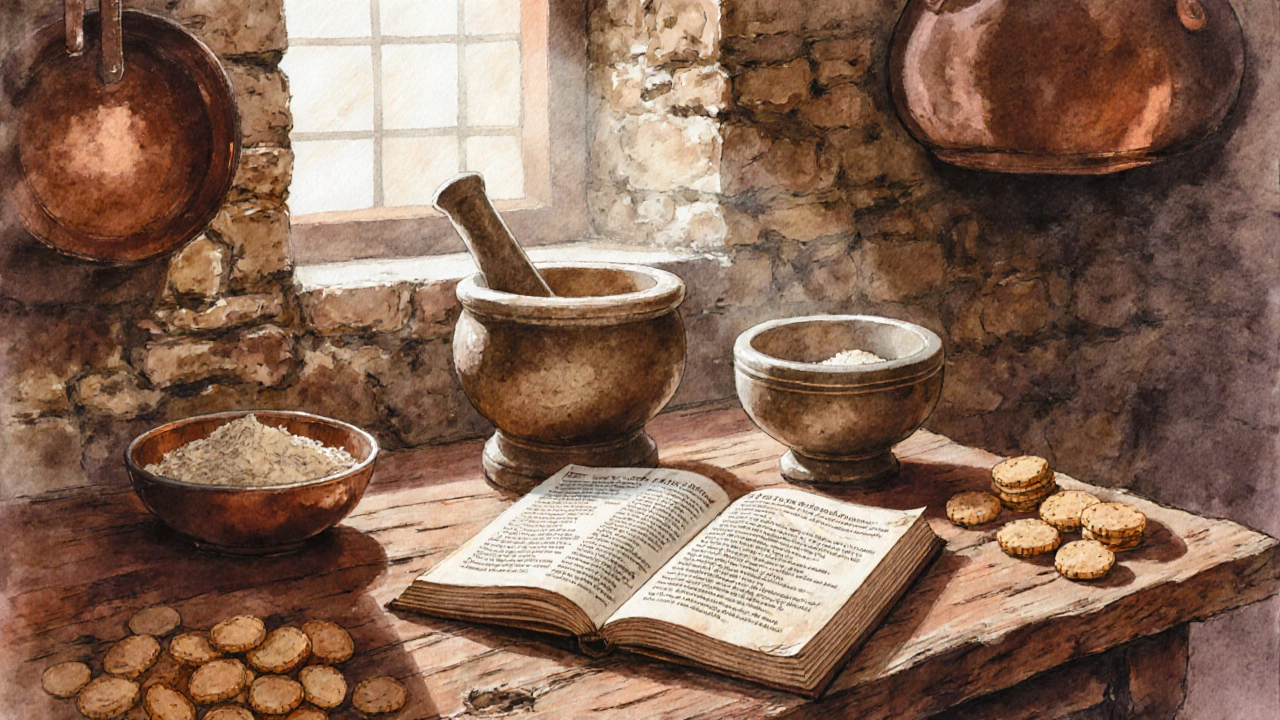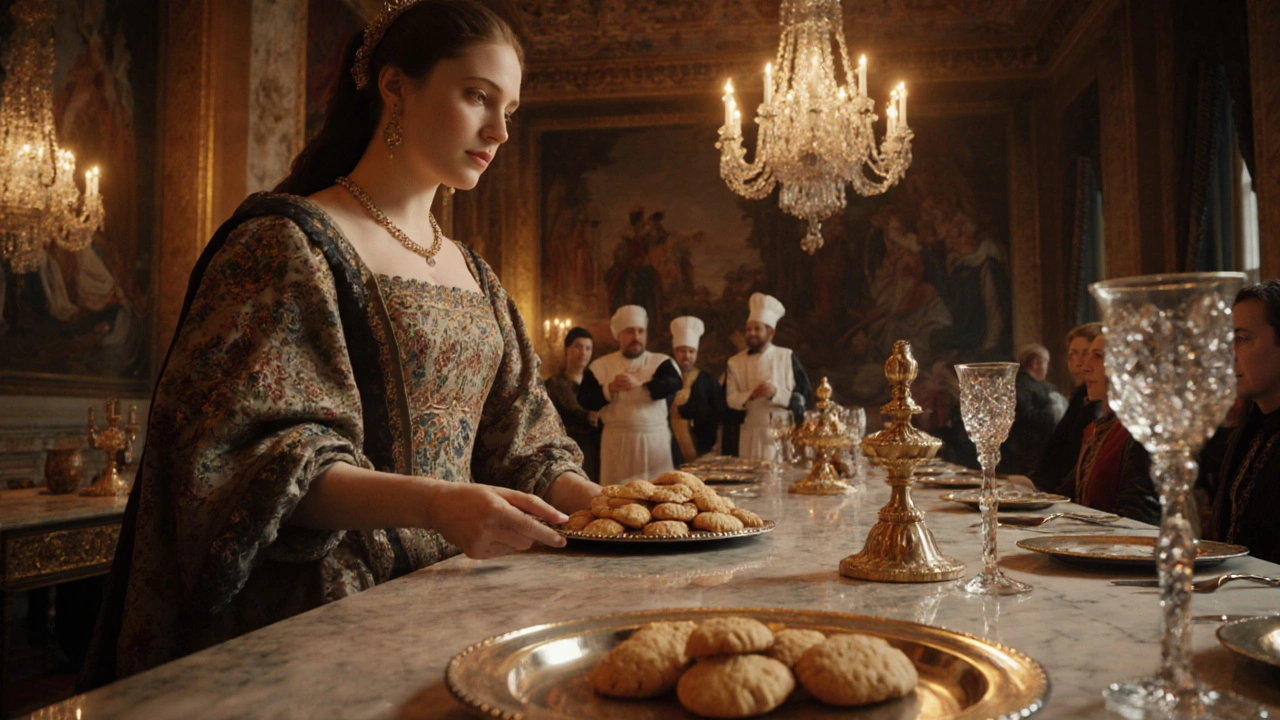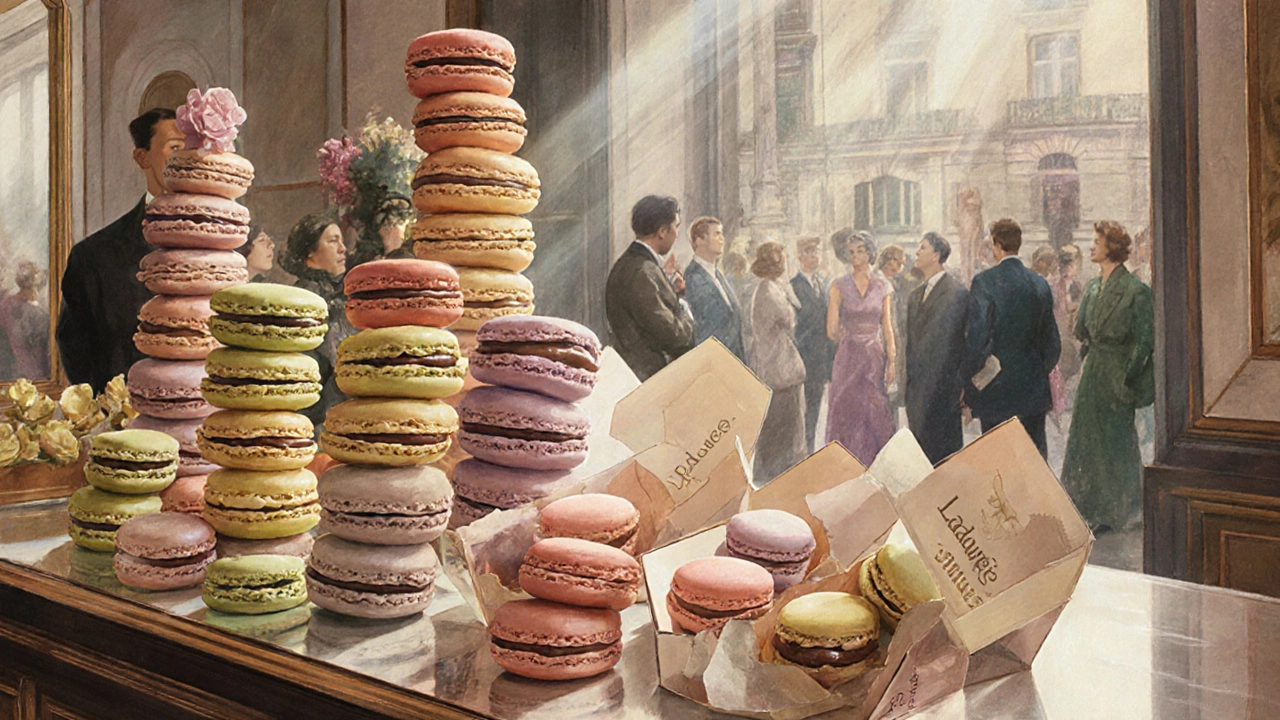
Macaron Knowledge Quiz
Question 1
What is the primary base ingredient of a traditional French macaron?
Question 2
Which of these is a type of pasta?
Question 3
What is the origin of the word "macaron"?
Question 4
Who is credited with inventing the modern sandwich-style macaron?
Question 5
What is the texture of a traditional macaroon?
Quiz Results
Great job! You've learned more about the sweet history of these treats.
Keep exploring the differences between macarons, macaroons, and macarrón.
When you bite into a delicate Macaron is a French meringue‑based sandwich cookie made with almond flour, egg whites, and sugar, you’re tasting a piece of culinary history that stretches back centuries. But the question most people never ask is: why is it called a macaron? The answer is a mix of language twists, royal courts, and a dash of marketing brilliance.
Key Takeaways
- The word "macaron" comes from the Italian maccherone, which originally meant a type of fine wheat paste.
- Catherine de Medici likely introduced the almond‑based cookie to France in the 16thcentury.
- The modern sandwich style appeared in the early 20thcentury at Paris’s famed Ladurée bakery.
- Confusion with "macaroon" (a coconut cookie) and Spanish "macarrón" (a pasta) is common, but the names have distinct roots.
- Understanding the macaron name helps bakers protect their brand and tell a richer story to customers.
From Italian Pasta to French Pastry: The Word’s Roots
The earliest trace of the term is the Italian word maccherone, used in medieval cookbooks to describe a fine, ground wheat dough. Over time, the word shifted to mean any small, round, sweet‑baked item. When the recipe traveled north with Catherine de Medici’s entourage, the Italian spelling morphed to the French macaron, dropping the extra "o" and keeping the notion of a tiny, round treat.
Some linguists also point to the Arabic "makrūn," meaning "soft," as a possible influence. The Arab presence in Sicily during the 9th-12thcenturies left a lexical footprint on many Italian culinary terms, making the exact origin a tasty blend of cultures.
A Royal Introduction: Catherine de Medici’s Influence
In 1533, Catherine de Medici married King HenryII of France, bringing along a retinue of chefs and confectioners. These kitchen wizards introduced an almond‑based biscuit called the "macaroon" to the French court. At that time, the treat was a single, crisp cookie-nothing like the modern two‑shell sandwich.
French aristocracy quickly adopted the recipe, and by the late 1600s, the name "macaron" was firmly entrenched in French culinary vocabularies. The treat became a staple at religious festivals and royal banquets, prized for its delicate texture and the fact that it could be flavored with exotic ingredients like rose water, citrus zest, and even gold leaf.

Parisian Evolution: The Birth of the Modern Macaron
Fast‑forward to the early 1900s: Pierre Desfontaines, an apprentice at the famous Ladurée pastry shop, is credited with inventing the two‑shell, sandwich‑style macaron we know today. Desfontaines added a creamy ganache between two crisp meringue shells, creating a contrast of textures that became a hallmark of French patisserie.
This innovation turned the macaron into a portable, elegant bite that could be packed into tiny paper cases-perfect for Parisian cafés and the burgeoning fashion scene of the Roaring Twenties. The naming didn’t change, but the shape and presentation solidified the macaron’s place in the culinary world.
Why the Name Stuck: Branding, Tradition, and Language
Even after the sandwich version appeared, the term "macaron" remained unchanged. The reason lies in the French reverence for tradition. Changing a name would have threatened the cachet of a beloved institution, especially one tied to the royal court and later to iconic Parisian bakeries.
In the 21stcentury, the name became a powerful brand asset. Famous shops like Ladurée, Pierre Hermé, and La Maison du Macaron use the word in their trademarks, turning "macaron" into a guarantee of quality and French elegance. This branding reinforces the original spelling and makes the name synonymous with luxury pastry.
Macaron vs. Macaroon vs. Macarrón: A Quick Comparison
Because the names sound alike, many people mix up these treats. Below is a straightforward table that highlights the key differences.
| Feature | Macaron | Macaroon | Macarrón |
|---|---|---|---|
| Primary base | Almond flour + meringue | Coconut + sugar | Eggs + flour (pasta) |
| Texture | Crisp shell, soft interior | Chewy, dense | Firm, al dente |
| Origin | France (Italian roots) | Middle Eastern & Mediterranean | Spain |
| Typical flavors | Raspberry, pistachio, chocolate, lavender | Coconut, almond, chocolate | Tomato sauce, olive oil |
| Common usage | Patissier boutiques, tea time, gifts | Cookies, snack bars, desserts | Main course (pasta) |

Modern Naming Trends: From Menu Descriptions to Social Media Hashtags
Today, bakeries use the word "macaron" not just on menus but also as a hashtag. #MacaronMonday trends on Instagram, driving both sales and brand awareness. Some shops experiment with hybrids-"macaron cupcakes" or "savory macaron bites"-yet they always keep the spelling intact to tap into the established prestige.
If you’re launching a new flavor, think about how the name will sit next to "macaron" in a search result. Pairing specific descriptors (e.g., "matcha‑green‑tea macaron") helps both SEO and customer intrigue. The naming convention also respects the cultural heritage, which many consumers appreciate.
Quick Checklist: Naming Your Own Macaron Creations
- Choose a distinct flavor profile (fruit, nut, spice, or savory).
- Pair it with a clear, evocative adjective (e.g., "velvet" for a smooth ganache).
- Keep the core term "macaron" in the title for brand consistency.
- Check for existing trademarks in your region.
- Test the name on social media; see if hashtags generate engagement.
Following this list not only safeguards your product legally but also leverages the historic weight of the macaron name to attract curious customers.
Frequently Asked Questions
What does the word "macaron" literally mean?
The term derives from the Italian maccherone, which originally described a fine wheat paste or a small, round biscuit. Over time it came to refer specifically to the almond‑based French cookie we know today.
Why are macaron shells made with almond flour?
Almond flour provides a light, moist crumb that balances the crispness of the meringue. The nutty flavor also pairs well with sweet or savory fillings, which is why it became the traditional base.
Is the macaron the same as a coconut macaroon?
No. A macaroon is a dense, coconut‑based cookie, while a macaron is a delicate, meringue‑based sandwich cookie made with almond flour. The similarity in names is historical but the products are quite different.
When did the two‑shell macaron become popular?
The sandwich style was popularized in the early 1900s by Pierre Desfontaines at Ladurée. From there, it spread throughout Parisian cafés and later worldwide.
Can I make a gluten‑free macaron?
Yes. Traditional macaron recipes already exclude wheat flour, relying on almond flour instead. Just ensure any fillings you add are also gluten‑free.